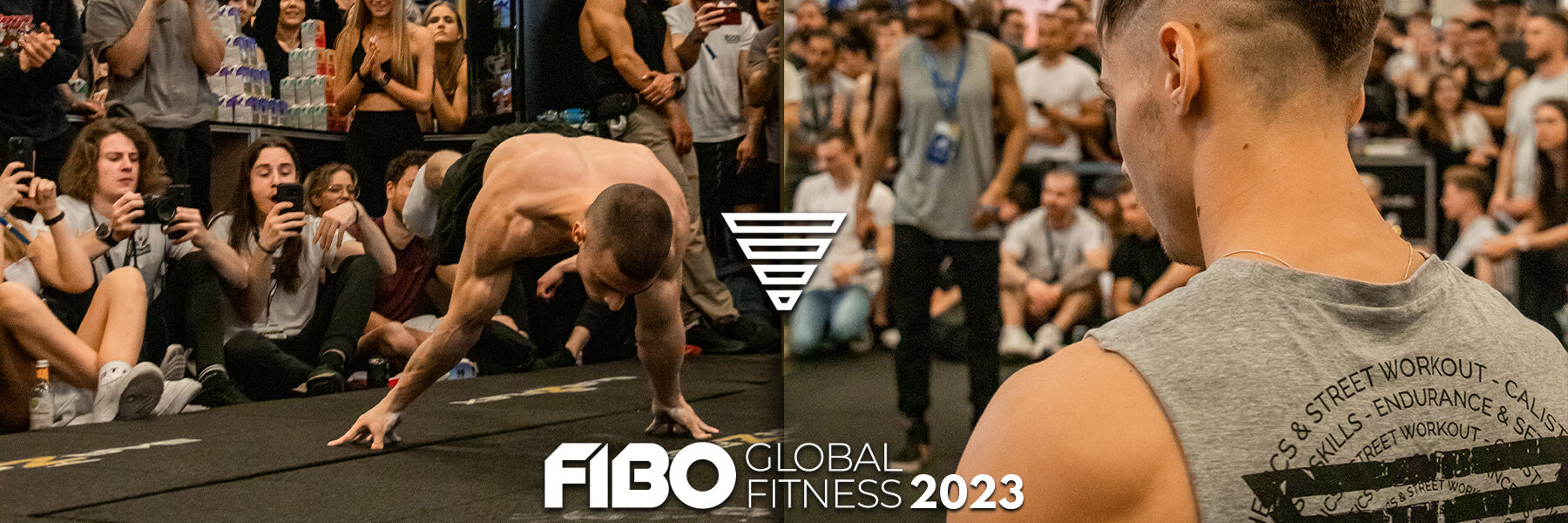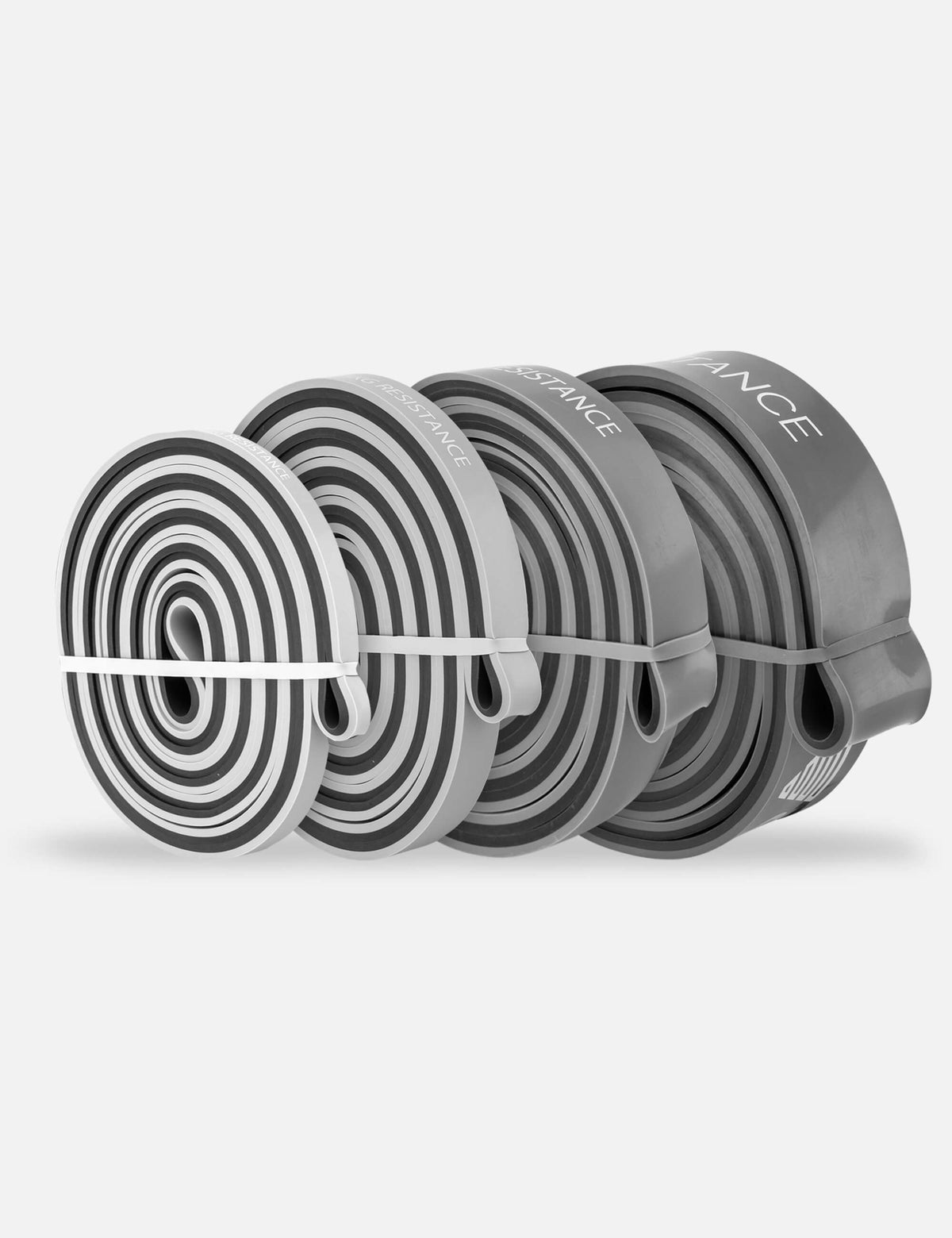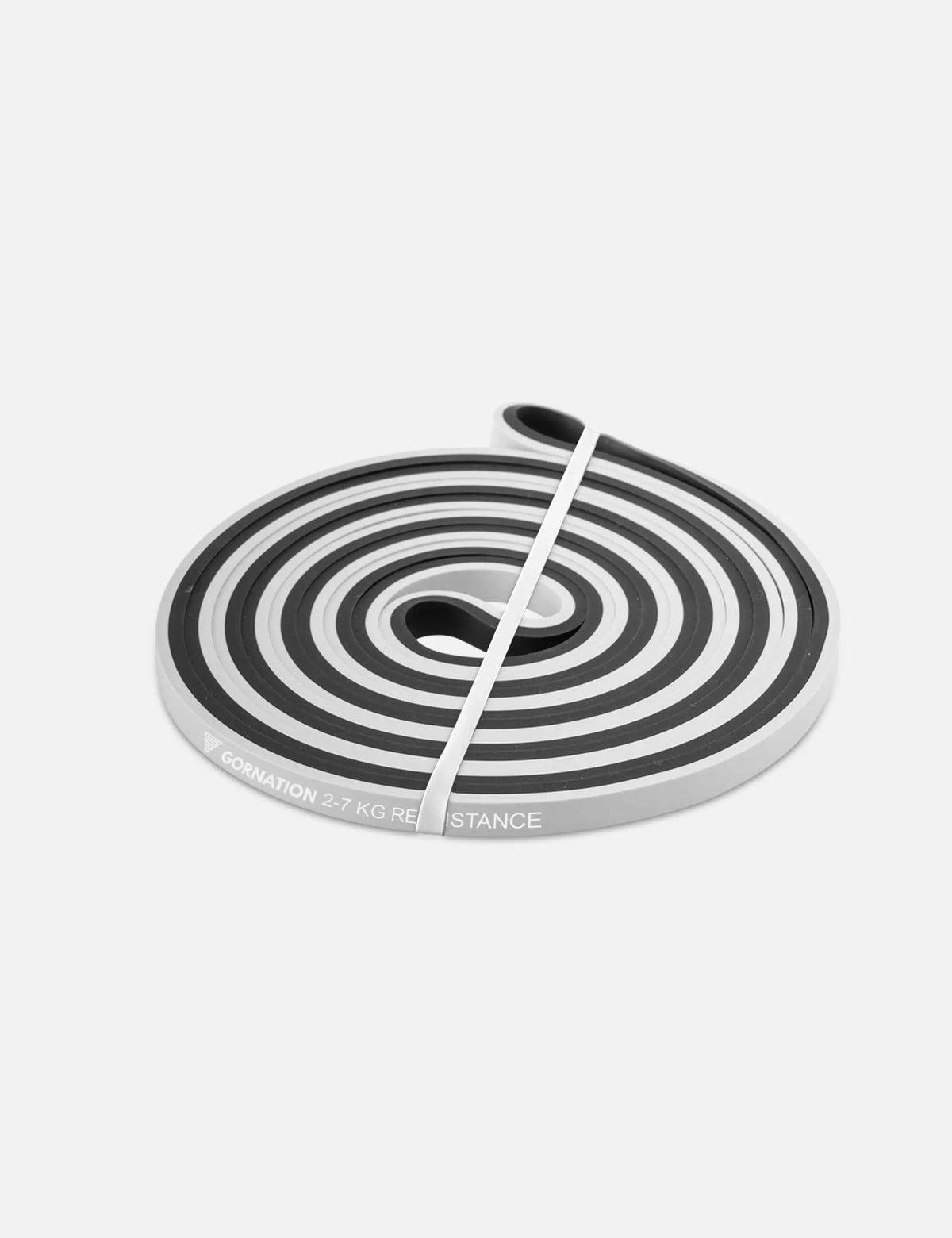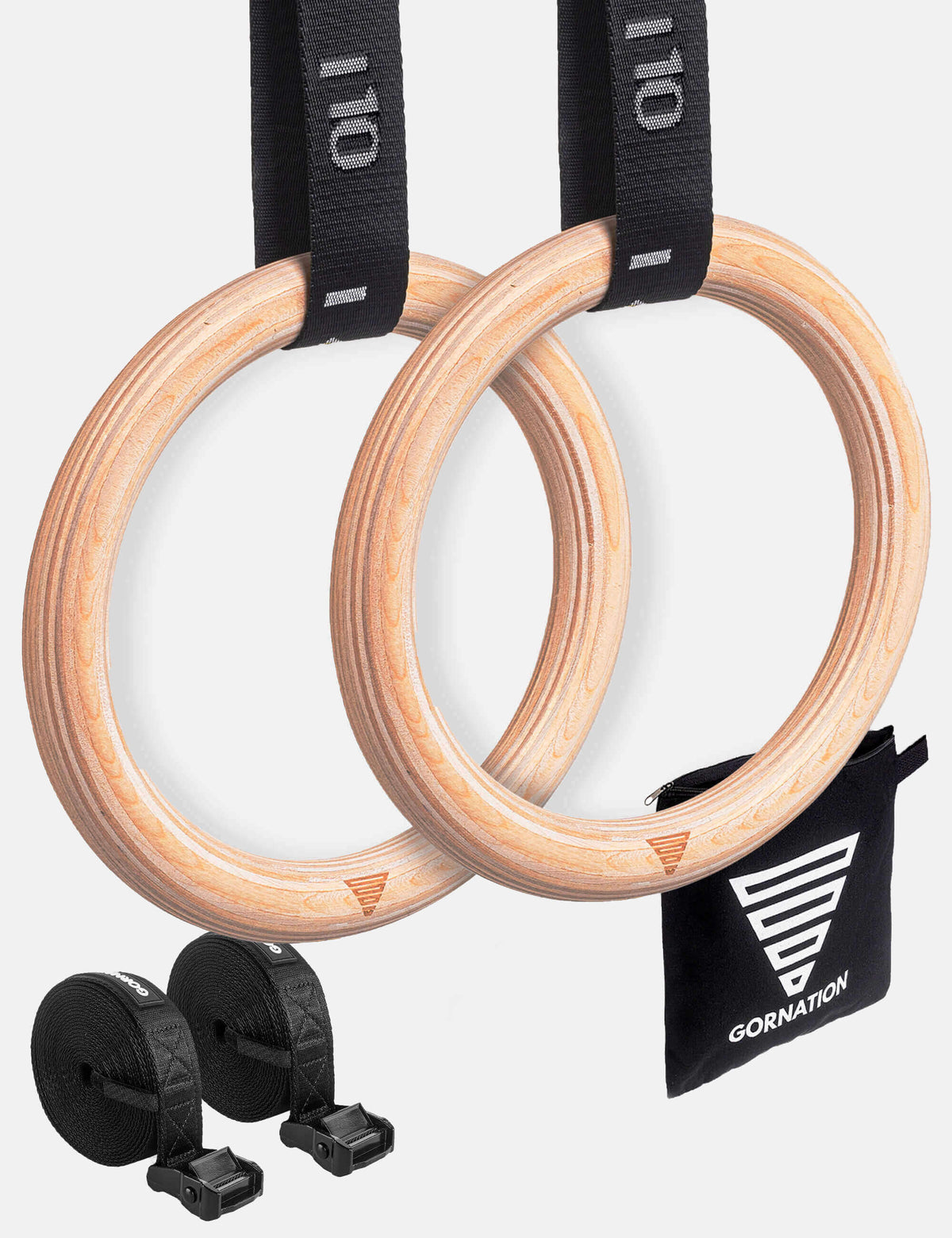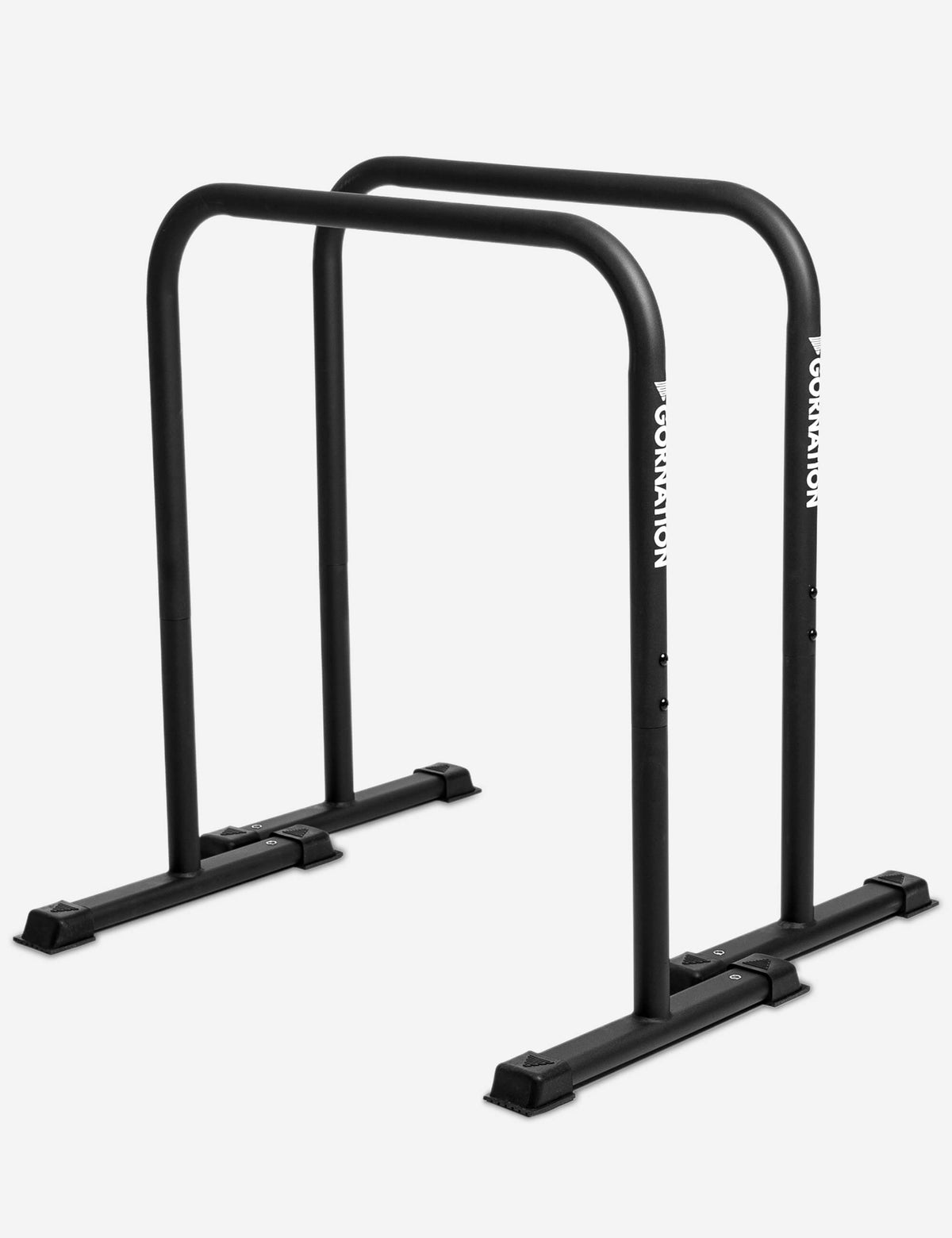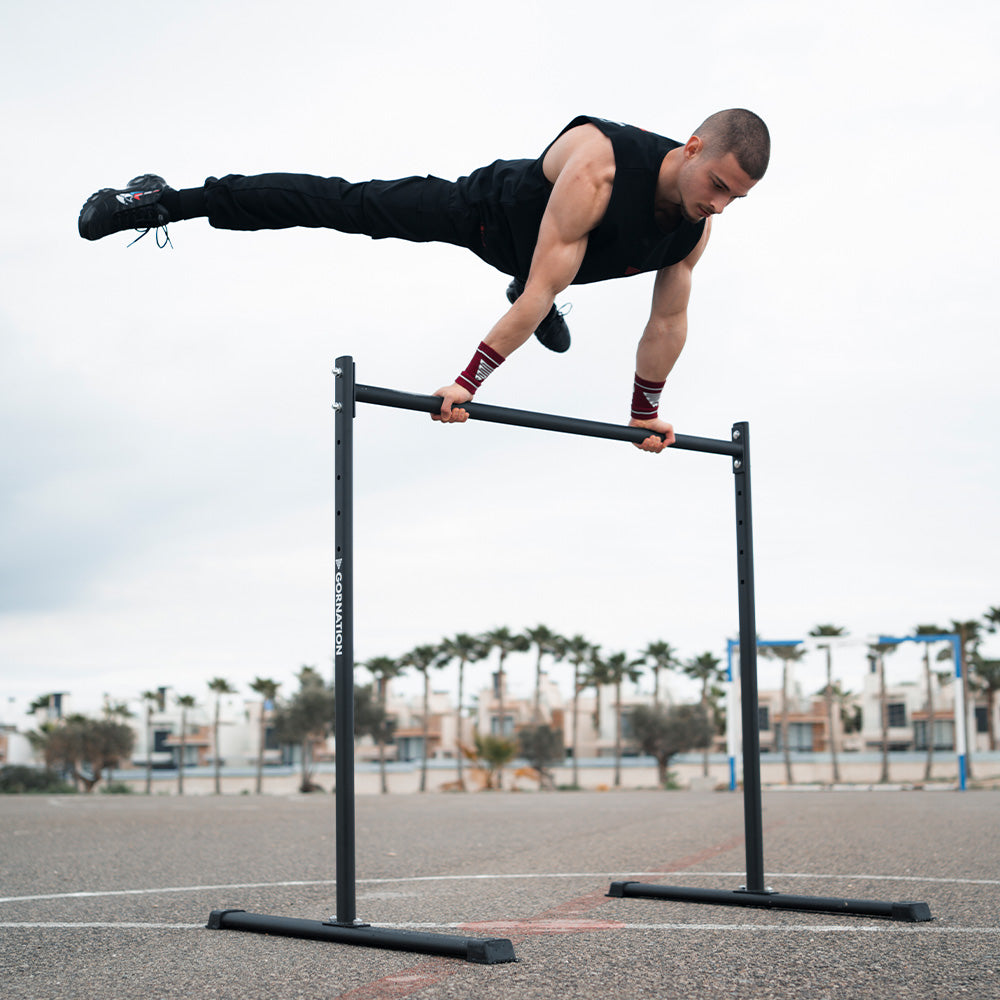The Deceiving Nature of Calisthenics Progress
By Frinksmovement
Introduction
Progression in training is a concept known for ages. The most popular story that illustrates it is probably the ancient legend of Milo of Croton. It's being said that as a child, Milo started carrying a newborn calf on his back. As the bull was growing larger each year, Milo was getting progressively stronger. This phenomenon illustrates the principle of training, known as progressive overload - the proactive process of increasing physical demands placed on the body - with the goal of acquiring specific adaptations.

In the last article of mine, you could learn about many adaptations, both morphological and neurological that contribute to the process of becoming a better bodyweight athlete. However, this text presumed, we know exactly what „better” is. And I know this may sound like another philosophical opening, but it’s actually not the case this time (sorry to all the fans). The thing is, even if we establish some foundational calisthenics definition and specify what we want to achieve with our training, the issue of measurement comes into play. If we are too simplistic and reductionist about our ways to observe and measure performance and progress, we are not really able to tell if our training decisions play in our favour.
In this article we will take a deeper look at calisthenics strength and strength in general, both in terms of acute measurement and assessment of changes in time (progress). You will get to know why “performance” and “progress” may be more complicated than you initially thought, and if there is something that we can do about it.
The Context of Strength

The first layer of this discussion lies in assessing, what is and how do we measure strength as a muscular ability (muscular strength). Even with holding on to a purely physical, performance based context it can be quite complicated. If someone could do 100 push ups, some of us would call them strong. If someone could do snatch with 150KG, we would also call them strong. Intuitively, these are different types of strength, but what actually makes them different?
The display of strength is strictly connected with force production. Strength can be defined as the ability to overcome or counteract external resistance by muscular effort. External resistance can be provided by weight, but also elasticity, hydrodynamic resistance/viscosity or inertia.
Someone who benches 100KG for 5 reps is likely stronger than a person who can do 100KG for 1 rep. However, that’s if strength is measured by number of reps with 100KG. If strength is measured by 1RM (one repetition max) first person must do a lift with more weight than the second person. This is the difference between “repetition strength” and “maximum strength”. However, no matter of the load that we choose in regards to measurement, there are two parts of the equation:
1) The force we produce
2) The external resistance that we overcome
Force Production
Because our movements primarily occur as a result of rotations in the synovial joints, both the force that we exert and the force that we fight against can be measured with torque, which is the effectiveness of a force at causing rotation. Torque is basically dependent on the force manipulated by moment arm - which is the shortest distance between line of force and the axis of rotation. It’s always good to visualise this concept using “real world” applicable example, therefore let’s take a look at this example of bicep muscle (keep in mind it is very, very simplified). The muscle (through tendon) is pulling on a specific part of the radial bone (technically speaking, muscle is pulling “to its center” from both directions, but since one attachment is stable, we are only taking the “movable” part into consideration). We could draw the line of action going through the muscle and put the axis somewhere in the elbow joint area - since that’s the center of rotation.

From this simple analysis, a very straightforward but important point may be deducted: the larger the moment arm and/or force the muscle can produce - the bigger the effectiveness of this muscle in the context of that joint and the stronger someone can be in this exact position.
Now, the strength that same muscles can produce is dependent on many factors. And I want you to consider 3 main “variables” that change this ability.
1. During lengthening, muscles can produce more force than they can produce during shortening contractions
2. Muscles produce less force when they contract more quickly (Force-Velocity Relationship)
3. The force production ability of muscles changes with their length (Length-Tension Relationship)
These 3 variables take into consideration the contractile force of one and the same muscle (highlighted “Force” on the picture). And of course there is also a moment arm that modulates the effectiveness of that force. The larger moment arm, the bigger effectiveness of muscle force (torque). Moment arm also changes along with range of motion, and will also change its effects on the torque that we can generate. This is what happens inside, this is how we produce force. But it is only one part of the equation. Our muscles produce torque, and the opposite torque is produced by some resistance. Let’s take a look at it now and establish what influences it.
Resistance
The weight of our limb produces the opposite torque and therefore its length and mass distribution matters as well (yes, our forearm is the resistance as well, which is why technically you could say that dumbbell curl is “weighted calisthenics”, look up this video if you are interested in this discussion).
And now, if we take something like a dumbbell in hand, the same story applies. Not only the magnitude but also the placement of this weight will contribute to the resistance torque. If you put the weight on the middle of your forearm, the same weight will produce much less torque and therefore - resistance.

A small weight can still produce a lot of torque if the moment arm is large. For example, you can hold 10KG in your hand with bent elbow or extended elbow. 10KG will produce dramatically different resistance on your shoulder, just because of the distance (moment arm). My face expression on the first photo speaks more than a thousand words.

And of course the same thing applies to calisthenics. Let’s take planche as an example, your body doesn’t change its mass during different progressions. While the mass of our body doesn’t change - center of mass of our body changes and moves in the direction of legs (inferiorly) once we extend the legs. This causes the perpendicular distance between force line and shoulder (moment arm) to increase and require much greater opposite, shoulder flexion torque. Same thing as in the photos above.

Looking at this picture you can also understand why both tuck planche and band assisted full planche can be used as progression. One of them manipulates the moment arm, second does manipulate force magnitude. So they both decrease resistance. We don’t need to go into specifics now, what is better option etc. All I want you to understand is WHY they both do the job at making things easier for you. From this picture you can also deduct why it's easier to perform planche for people whose center of mass is higher (superior).
Alright so we know that the same load can provide different resistance to our muscles based on the moment arm. But moment arm is not the only thing that modulates the resistance. I want you to imagine an elite weightlifter that approaches a barbell weighting 100KG to perform a snatch. You probably think that this will be a piece of cake for him. At the end of the day he is capable of snatching 200KG. But here is one caveat, he must do this movement very slowly. Suddenly, 100KG becomes an impossible weight to lift overhead… But, it is still 100KG right? Let’s take an other, more calisthenics related example. Instead of performing a pull up by starting fast from the bottom, slow this movement down just a little bit, not as much as Tazio, but just make it 3 seconds long. Would you be able to take same weight on a belt for both of these movements?

Yes, you are lifting your 80KG body through the same range of motion in both cases. But it doesn’t mean that you are producing 80KG of force on the bar at all times. You identify where you are the weakest and the strongest in the range of motion, then you use inertia to work through your weakest point. A simple experiment I want you to try: stand on the scale and start moving a bit up and down by bending your knees. You will see that dependent on how much and how fast you move, the bigger fluctuations you will observe on the scale.
This is why weightlifters start their lifts slowly and then accelerate it when the bar is approximately at knee-joint height. They need to produce lots of force in their strongest position (and they have to do it at low speed to generate most force - as mentioned in force production part) and then use it to accelerate and move through the toughest part (it would be impossible to lift that weight with muscle press up). Same thing happens in a pull up, when you do a “kip”. Part of that happens naturally, but in complex movements it is a part of the strategy and motor learning.
And here is the thing, its us (or the sport rules) that dictate what can and what cannot be done. If we do weighted pull up 1RM for the sake of getting the highest score, the most effective strategy would be to use kip. But kip is something we consider to be cheating. On the other hand, pulling up fast from the bottom to overcome the top part (that we could not hold statically with this weight) is something “within the rules” and therefore it is not cheating, just efficiency.
Another thing that we dictate are the range of motion requirements. What if someone does a heavier chin up, but does not cross the bar with his chin? We consider that a failed rep, even tough on an angular level he could achieve same angles in his joints as the other person that did a chin up with 10KG less. He might just have proportionally long forearms and short neck. Despite that we would still say the other person is stronger. And it is not bad, but it shows that “strength” is very dependent on our interpretation.
Range of motion is the subject that needs its own separate investigation. But it is definitely one of those things that we must consider when accessing strength. Given that in each joint we have different strength curves and each exercise has its resistance curve - this means that our strength will be very dependent on the range we test it. We might be really good at upper part of handstand push up, but very bad at the bottom part or in the middle. Our “strength” will depend on where we measure it.

Do you find dips to be harder on the rings than on the parallel bars? The answer to this question is most likely “yes”. This time the velocity might be the same, the mechanics in terms of range of motion might be the same as well. But what differs these two types of resistance is stability. The reason dip is much harder on rings is the same reason why squats on bosu balls are more difficult than squats on the ground. This is because of the balance and coordination that demand a lot of work from our antagonists and synergists. These muscles work very hard to keep you balanced, but because of it your force production in a specific direction (for example, pushing down in dip on rings) is diminished.

The level of stability is very important when comparing the exercises. For example, when doing overhead press on a smith machine most people will be able to lift more weight than when pressing up a free barbell. This is because while barbell can rotate in multiple directions, go forward and back, in smith machine you are only concerned with pressing the weight up. You are not limited by your imbalance between limbs (while free barbell does it to some degree) or by holding the bar above your head, your force production is “concentrated” due to machine guidance. Remember to pick up on little things, like the length of rings straps, the construction of machines as well as those bigger things like the surfaces, areas of support and whether movements are bi/unilateral (performed with two or one limb). All of that matters, and modulates our expression of strength.
The Deception of “Load”
And here is the plot twist. What if we consider all of the things above, but the load we see doesn’t tell us much about the load we are actually dealing with? The picture shows a popular leg press machine that people very often use to compare their “strength”. But what if “how much you leg press?” is not asking for enough information? In this example, two people press different numbers of “weight”. And in order not to complicate things for now let’s assume they don’t press that weight but just hold it statically (to throw out inertial effects). Surprise here, they have to produce about the similar force - which is something around 70KG. 
Obviously if you want to be very exact, you can calculate it by taking the angle of that machine, finding out sinus of this angle and multiplying that by the load in both cases. But it’s not the point I try to visualise here. The point is that sometimes what we see on the outside is deceptive. There are already differences in torque production with the same weight that we have to take care of. But sometimes, even that weight doesn’t represent the “weight” we are dealing with. These kinds of scenarios will be very often present - specifically with machines. Below Im giving you another two examples out of MANY.
Rings rows with weight are pretty popular. But did you know that where you put the weight matters a lot? In the simplest possible explanation, the closer to feet you put the weight, the more of it your feet will take and the less will go to your hands that hold rings.

Let’s take a look at these pulleys. The “load” may be the same, but the variations in how the machine is built will determine how much force we have to put to overcome this load. Also, it will change the relation of distance that load is moving to the distance we are overcoming. And on top of that, add the friction that these pulleys may provide. All of the sudden the kilograms number doesn’t tell us anything. It is important to keep this in mind.

And so, that is a pretty telling explanation of why we should be pretty specific on how we measure our strength. Because both the resistance and force production of our muscles change based on many factors, we need to always be very specific. To summarise, below are some of the things that we must consider:
-
Range of Motion
-
Load
-
Stability
-
Type of Resistance
-
Velocity
-
Type of Contraction
The Strength Normalisation
Alright so we found two people, they both do a 1RM test and it turns out that with same range of motion and velocity they maxed out on a bench press with 100KG. We found people who are equally strong in this context! Well, the only difference is, one of them weighs 70KG and the other 120KG.

Obviously if we measured things on absolute, just by comparing the number of kilograms someone lifted, it would favour larger individuals. Of course, the relation between body weight and strength is not always accurate. However, when we take athletic population and especially people participating in strength sports, the correlation becomes strong. We could argue that for someone who weigh less it is more difficult and this is why in sports, this problem is often tackled by the existence of weight classes. The procedure of strength normalisation is used to compare athletes of different body weights. The premise of this procedure is to eliminate body weight as a variable and leave out other factors that determine strength.
The first thing that probably comes to your mind is simply dividing athlete’s one rep maxes by bodyweight. Let’s say we do it for the same people I mention at the beginning of this segment. One of them lifts about 143% BW (100/70) and the other 83% (100/120). They both press the same weight on an absolute but on relative the lighter guy is much stronger. „Now it’s fair!” Thats what most people would say. This method is called Relative Scaling, and there’s reason why its not being used as a standard for normalisation. Relative strength favours people who are lighter.

Yes, if you look at world records in any strength discipline based on different weight classes - you will notice this trend: The higher the weight class - the bigger the records (on absolute) and the lower the weight class - the bigger the relative results. Thats also what researchers noticed in this study from 2013 where they took 1RM in squat and deadlift of 606 elite football players, who were ranging from 75KG to 155KG in their bodyweight (that’s a huge range).
Why is it the case? It has to do with a simple fact that surface area of an object grows slower than it’s volume (square cube law). It is assumed that this has similar effects on human body relative strength - because strength is more or less proportional to the muscle cross sectional area and weight is proportional to the volume (given that density of muscle and fat - which are primary components of bodyweight, is pretty similar). The idea is that if someone gets twice as large in regards to size - he will get twice as strong, but also 3 times as heavy. In a large scale of difference it can manifest itself quite spectacularly - an ant can lift couple of other ants on its back, while an elephant could never lift another elephant. This phenomenon is especially visible in athletic population, where athletes are already pretty similar to each other in terms of proportions and body composition (selection process). This is where “scale” plays the biggest role, because it's the only factor changing.
Because of this phenomenon, relative scaling is not used for the sake of normalisation. Whats being done instead is „allometric scaling”. Allometric scaling take this relation into consideration and uses logarithmic scale to compare athletes (we won’t get into the maths). The first person who documented this phenomenon was a chemist M.H Lietzke in 1956. He compared weightlifting champions of different weight classes and put them on the scale - which resembled the allometric prediction almost perfectly.
In the same article on football players I mentioned, the groups compared via allometric scaling also turned out to be very close to each other. Which again confirms that allometric scaling may be an accurate normalisation method. Notice that - same athletes, different methods of strength normalisation and completely different results. Keep in mind tough that the allometric scaling is not a perfect method, and there are other, more complicated scaling methods. For all my nerds interested in that I will leave a literature in the “further reading” section.
Calisthenics/Gymnastics strength is a way of relative scaling normalisation. Your performance is dependent on the relative level of strength in relation to bodyweight. While allometric scaling may seem more fair, calisthenics does not really care about it. And therefore smaller individuals will be usually predisposed to calisthenics. This is again very important when we measure “strength”. How do we measure it? What is our goal? All these questions need to be answered if we want to be precise.

Strength Progress?
In the previous sections I tried to explain why strength is a complicated thing to determine and measure. Naturally speaking, you can’t be 100% precise. This is rather to broaden up your perspective on what “strong” means and how many factors play a role in determining it. Now I would like to transition to the actual progress. Progress in this context - as the process of getting stronger over time. The natural extension of what I wrote about and something that we can apply to our training (and not only comparing ourselves with others) is consistency. Consistency in terms of velocity, in terms of range of motion, in terms of resistance placement. Controlling as many variables as we can while manipulating only one of them (for example number of reps). This way if we see an improvement in one of these variables over time - we can tell that we make progress. This sounds really good in theory, and as a calisthenics coach many times I tried to hold on to this. I was trying to be really strict with my guidance on how the reps should look like. I quickly saw that like everything - it is a spectrum. You can obviously just not control anything and be totally over the place, and on the other hand you might be a control freak perfectionist that actually diminishes his clients results by setting unrealistic standards. As it was always for me, practice verifies all the theoretical knowledge.
Now, when it comes to progression, which unlike strength - is measured in at least two points in time, there are two additional aspects that dictate our strength expression - even if we take into consideration all the other things we talked about regarding mechanics. First factor is rather a group of factors - that I call - transient determinants of performance. I want you to imagine a following scenario:
You come to the gym and do a max full planche hold, it turns out you get 6 seconds. After 3 months of training you come again, with the same bodyweight and with the same form, you get 6 seconds again.

On the outside, it seems like you made zero progress, you are stuck and your plan is ineffective, your effort is low or your genetics are bad. But, what if something different happened?
On first day of testing, you had a really good day that you peaked for. Your life was pretty good, and you went to the gym with your friends in the morning feeling refreshed and motivated. On the second day however, it was different. You had a really hard push session the day before and since its already 5th week of your mesocycle you have a lot of built up fatigue. The last couple of days you have been sleeping very poorly because of exams. You came to the gym in the night, tired, hungry and dehydrated.
You see where Im going with this, your strength performance is dictated by many transient factors that affect your level of mental and physical fatigue. And of course, most of our progress will come from the actual long term adaptations to training (that I wrote about in the previous article). Most of us would intuitively take this sort of disproportion into account. However, we rarely pick up on less aggressive scenarios and differences. However, it’s very important to keep this in mind when comparing your strength to see if you make progress.
The second factor has to do with the methodology of progress and how we progressively demand more from our bodies. So, this time we gonna start with a story.
A guy follows a simple progression model, he does 3 sets of 5 pull ups every Monday and adds up 2.5KG to the belt every single week. If we take a superficial look at his training month, all seems really good. He started from 25KG and after 4 weeks he was doing 32.5KG for exactly same number of sets and reps.

On paper everything looks good, the numbers are increasing. But can we say that he actually made progress? The second picture gives us a little bit of extra data, that changes a lot. (RIR - Reps in Reserve)

Well, can we really say that this person has progressed? Or maybe he just progressively increased the difficulty of his training? Maybe he is at the exactly same place that he used to be one month ago, but because he had a lot of reps in reserve at first he could maintain same reps and sets while adding kilograms to the belt? Maybe, maybe not… but what I am sure of is that we can’t really be sure.
I started looking at the progression differently after listening to the Episode 129 of Barbell Medicine Podcast. In this episode Jordan and Austin were discussing the idea of progressive overload, and whether it is a good term for what we try to achieve in training. I recommend everyone listening to the whole thing. But for me the most important takeaway is a different view at the training loads. In a traditional way of thinking, in the following training sessions we force ourselves to do more than last time, for example to lift more weight. The idea is that by doing that, our body gets the stimulus to grow stronger. In the way of thinking proposed by Austin and Jordan the order is reversed, we do our training session which provides the stimulus for the body to improve, and once we improved we are able to handle larger training demands - they called it “the progressive loading”. This is something that really caused a mindset switch in how I train myself and my clients.
And again, this is NOT to say that this progression system is bad. However, there is a difference between progress and the appearance of progress, which is just an increase of difficulty. So the proximity to failure, sometimes called relative intensity is the thing that must be considered as a parameter and variable. Whether it is done by reps in reserve, RPE scale (rate of perceived exertion) or velocity loss tracking. This is another thing that while not as important with one time strength measurement (because when we max we are roughly at the same proximity to failure) it is very important with measuring progress from workout to workout (because we usually train with some reps in reserve - not in all training systems, but in many of them).

Conclusion
On a superficial level, strength may seem like a simple thing to assess and measure. However, when we start taking all the things into consideration and looking at them in a bit deeper way it starts becoming quite complex. It is important in strength assessments, but arguably even more important in the context of measuring progress. It is important that we are aware of this - as people who train, teach others and compare both with other people and with our own previous results. In this article I wanted to show you a bit of that complexity. From the force production ability through resistance and how it changes with inertia, load placement, stability and range of motion, till factors like fatigue and proximity to failure that modulate how strong we are or how strong we look as well as different ways to normalise our strength. The number of kilos we see becomes only a small part of equation. Whatever you do with this is up to you, however one thing is certain. Next time you get an instagram comment “strong bro” - you know it's more deep than it looks.
Thank you for reading.
Eric (frinks)

References and Further Reading
Content re-used:
https://barbellrehab.com/rpe-guide/
an image of Milo of Croton - source not found
 | 3.700+ Reviews
| 3.700+ Reviews Free EU Shipping above 100€*
Free EU Shipping above 100€* Worldwide Tracked Shipping
Worldwide Tracked Shipping

